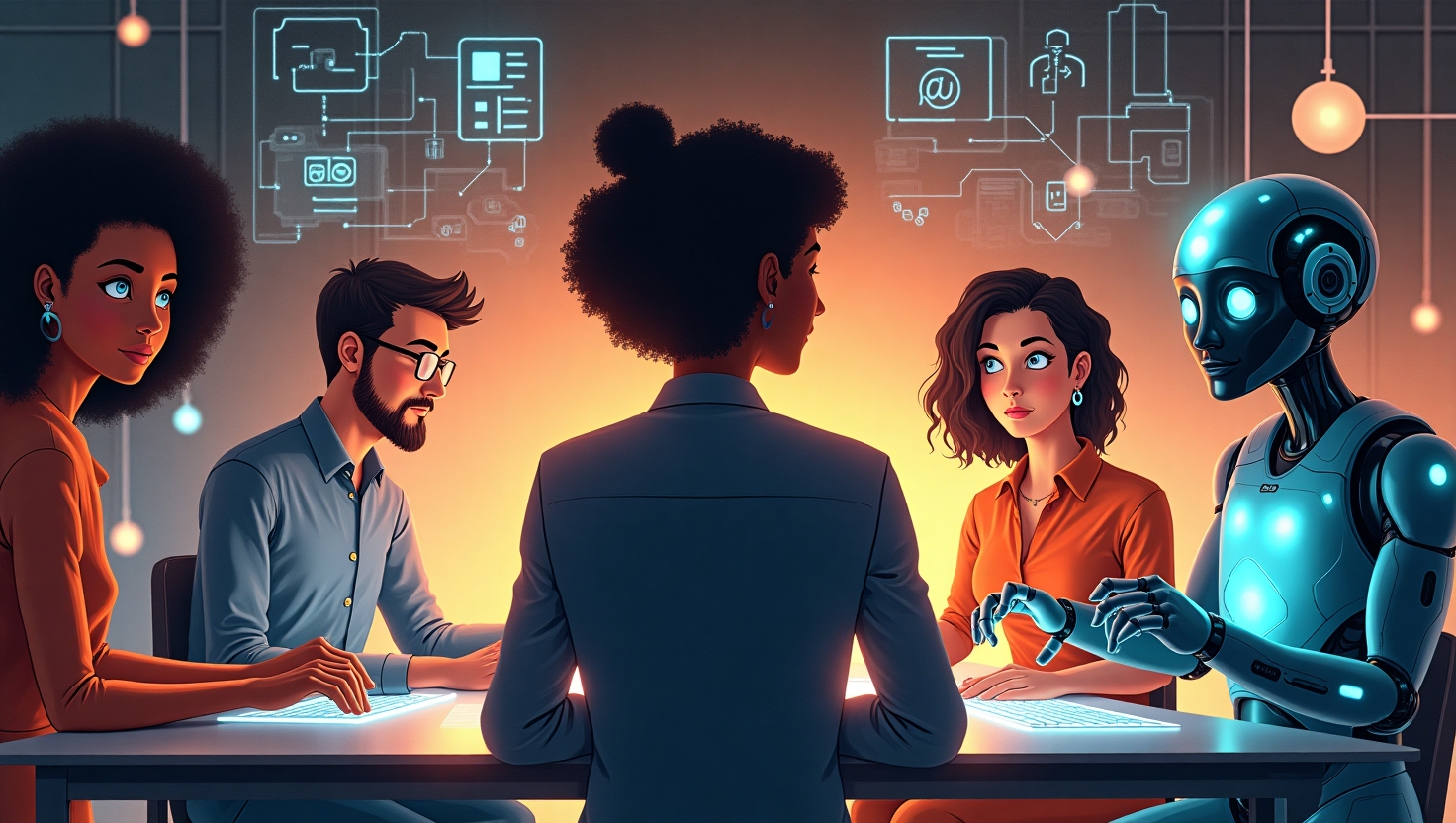The Future of Work: Navigating the AI Workforce
Introduction
In today’s rapidly evolving technological landscape, the concept of the AI workforce is swiftly gaining traction. As we stand on the brink of a new era defined by artificial intelligence (AI) integration, understanding the implications is crucial for both employers and employees. This exploration into AI job predictions and the reactions of major corporations like Microsoft offers a roadmap to navigating these transformative changes. The question is not merely how many jobs will be affected but how the very nature of the workforce will be reshaped to accommodate new technological realities.
Background
The impact of AI on the job market has been significant, with major companies reallocating resources towards AI development. Microsoft, for instance, has announced plans to lay off up to 9,000 workers, a strategic move aligned with its $80 billion investment in AI-related initiatives such as developing large data centers and training AI models source. This is not an isolated incident but part of a broader trend where corporations shift focus from traditional roles to new-age technologies. The reallocation also highlights a growing emphasis on AI as a catalyst for sustainable competitive advantage. Imagine a bustling metropolis; to avoid traffic congestion—a stand-in for resource allocation—roads, the workforce, are redesigned to include faster AI tunnels.
Simultaneously, the competition for AI talent is heating up. Other tech giants such as Meta and Amazon are increasing their offers to attract top-tier professionals, with signing bonuses exceeding $100 million source. This scenario underscores the evolving dynamics in job requirements, shifting from labor-intensive tasks to skillsets focused on AI innovation and implementation.
Trend
The trend towards automation and the integration of AI is not merely on the horizon; it is a present reality. Dario Amodei, CEO of Anthropic, predicts that AI could render half of all entry-level jobs obsolete in the next five years, potentially elevating U.S. unemployment rates to 20% source. Similarly, banking sector leader Marianne Lake forecasts a 10% reduction in the workforce due to AI advancements. These predictions are a clarion call for a more strategic approach to job training and industry adaptation.
AI’s role in transforming jobs can be likened to replacing manual typewriters with computers—ceasing the redundancy of certain tasks while unlocking new avenues for productivity. However, this transformation raises questions about the socioeconomic impacts of such rapid technological acceleration.
Insight
Expert insights provide clarity amid shifting sands. The competitive landscape for AI talent is intensifying as companies vie for scarce resources—skilled professionals who can harness AI’s potential. The recruitment race between industry giants like Meta, Amazon, and emerging players adds a layer of urgency and complexity to the situation source.
This competition signifies a broader intent to drive innovation, but it also introduces disparities. For instance, companies not able to match offers from giants might find themselves at a disadvantage in retaining talent. This is similar to a market where only a few can afford luxury goods, creating exclusive circles that breed inequality in opportunities and resource access.
Forecast
What lies ahead for the AI workforce? Forecasts suggest significant employment shifts with potential increases in unemployment rates due to AI replacing traditional jobs. Emerging roles will demand different skills—critical thinking, programming, and data analysis—emphasizing the need for continuous learning and adaptability.
Anticipated changes in job structures posit a dual focus: re-skilling existing labor to meet new demands and creating educational pathways for future workers. As the AI workforce expands, policies must support a balanced transition, ensuring that technological integration does not exacerbate existing inequalities but fosters an inclusive job environment synchronized with AI advances.
Call to Action
As the AI workforce reshapes the professional landscape, staying informed and proactive is crucial. Individuals should consider AI-related training programs that align with future job opportunities. Readers are encouraged to explore resources and articles that provide insights into these transformative changes, such as our detailed discussion on Microsoft job cuts.
To prepare for a future dominated by AI, embracing lifelong learning and digital literacy will be essential. Engaging with educational platforms and industry discussions can enable a smoother transition into the AI workforce, ensuring preparedness and adaptability in this new age of employment.

